Talk about Gujarati foods and the first few preparations that immediately get mentioned are Dhokla, Thepla, Khaman, Khakhra and Handvo. It is an exhaustive list, but these are the few food preparations most associated with Gujarati cuisine. Handvo, that is often referred to as a savoury cake is a slow-cooked fermented mix of rice and lentil batter. The classic recipe is rather simple, one that does not include too many vegetables or pulses, rather it calls for the humble bottle gourd to give Handvo a soft crumb and some everyday spices staple to Indian kitchen. That is all there is to this iconic preparation.
Bhoomika had once mentioned how they still make Handvo the traditional way over the coal-fired sagri/sigri in the conventional brass pan that is designed for Handvo. Just the mention of it intrigued me because in these times of convection oven and microwave cooking I haven’t heard anyone making Handvo in such traditional way. Apart from baking, the most common way of making it is in a Handvo is in the Angle cake pan shape contraption that comes with a lid and a sand tray for the bottom. The sand promotes even cooking, funnel shape helps with the quintessential Handvo crust to form all around and lid with large holes helps those intend to put coal on the top.
Ever since I began blogging I have been on the lookout for family recipes of Handvo as each family has its way of making this dish. So when Bhoomika shared her family tradition of making Handvo over saghri I couldn’t stop myself from requesting her to share it for the blog, not just the recipe but actual cooking. After a few missed opportunities the cookout did happen on a pleasant winter afternoon in Ahmedabad. Bhoomika and her mother-in-law Minalben cooked up this classic Handvo over a saghri. The skill for many would be to light up the saghri before diving into making the Handvo. The attached video has captured most nuances. Bhoomika’s twins captured the grinding and soaking actions the previous evening when the batter was left to ferment. It is always fun to have a cookout with friends over all the Gupshup and catching up. Always grateful to friends and family who open up their hearts and hearths for such blog features.
There are numerous Handvo recipes on the blog, each different and unique in its own way. It makes one realise how amazingly versatile Handvo is.
This recipe can be made over a stovetop too. Make it in small batches if you do not have a flat sauce pan like so, do not fill the pan beyond 1/2 level. Yes, there is a lot of oil used in making this Handvo and you should not skimp on it. The oil gives the Handvo a crumb that is soft and doesn’t dry during the hourlong cooking. This kind of Handvo is hard to cut into tubes are you often see on the web. A Hanvdo like this needs to be served as a generous scoop to be enjoyed with some homemade Gujarati pickle and masala chai.
❤️

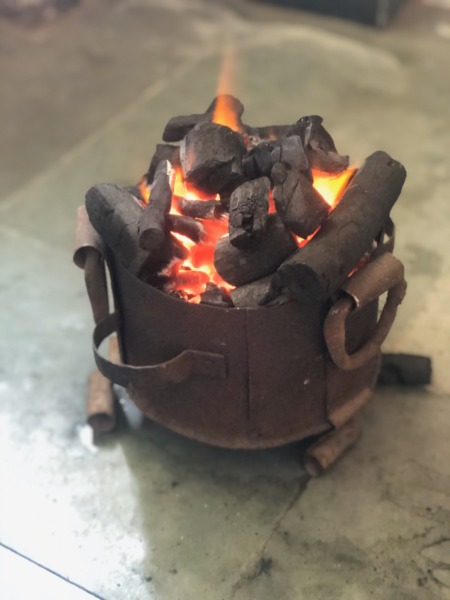
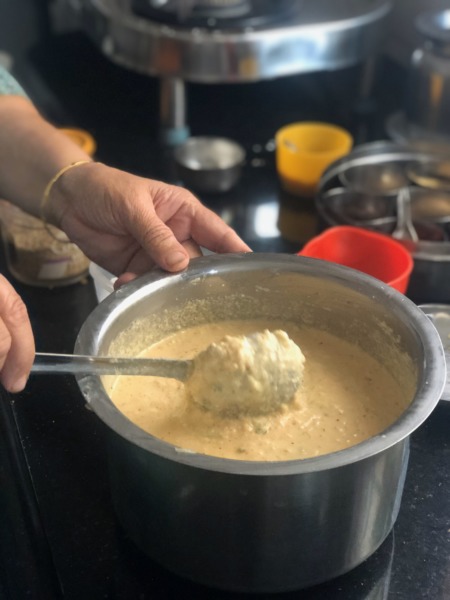
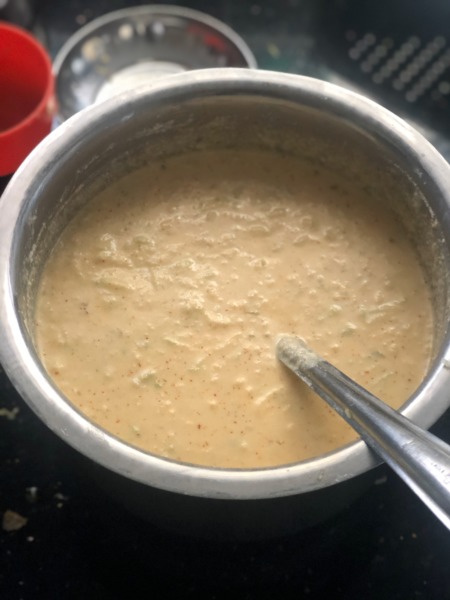
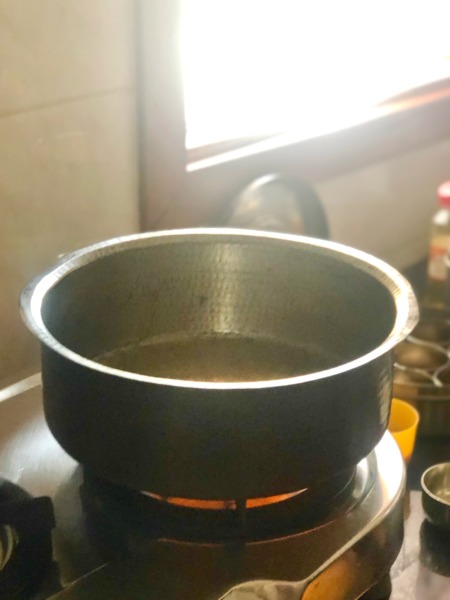
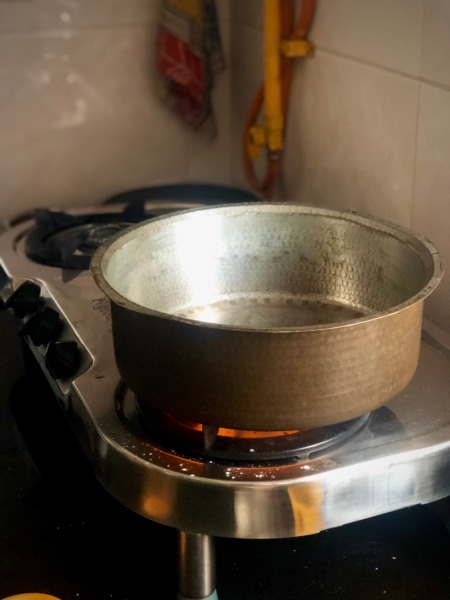
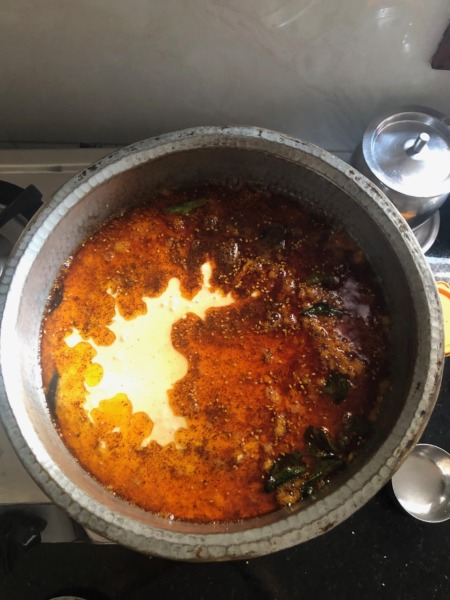
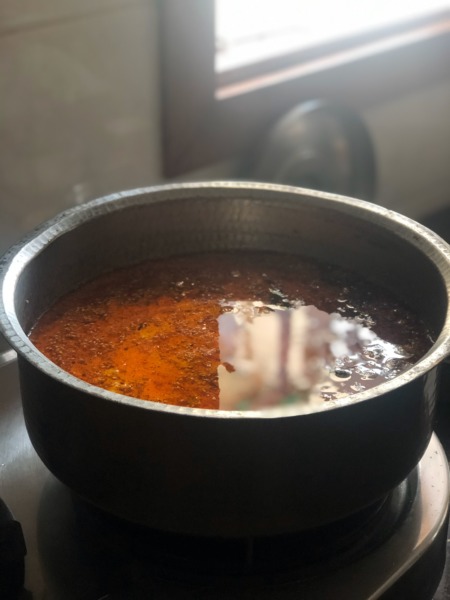
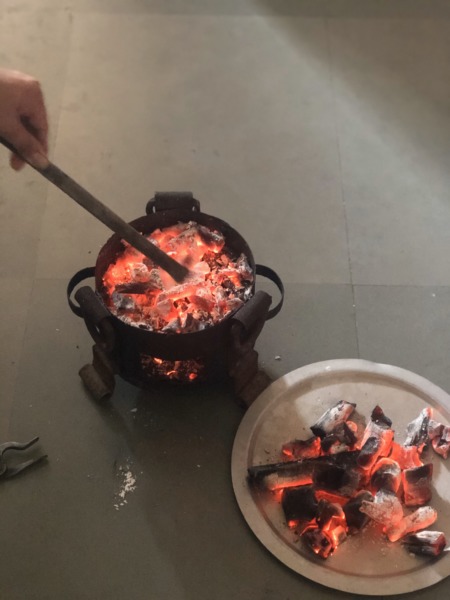
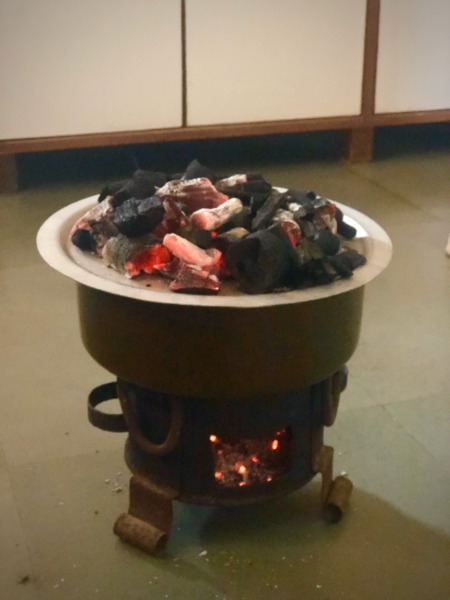
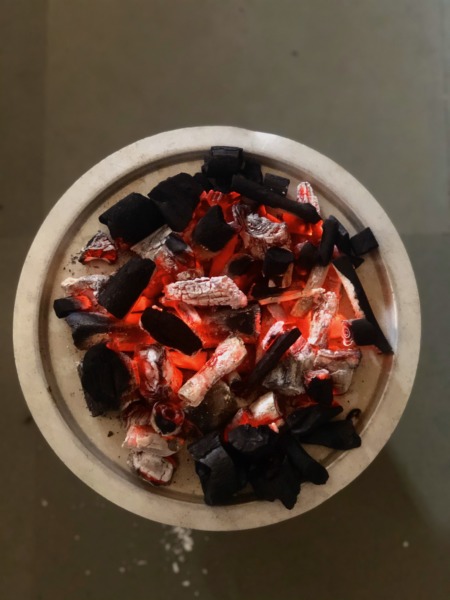
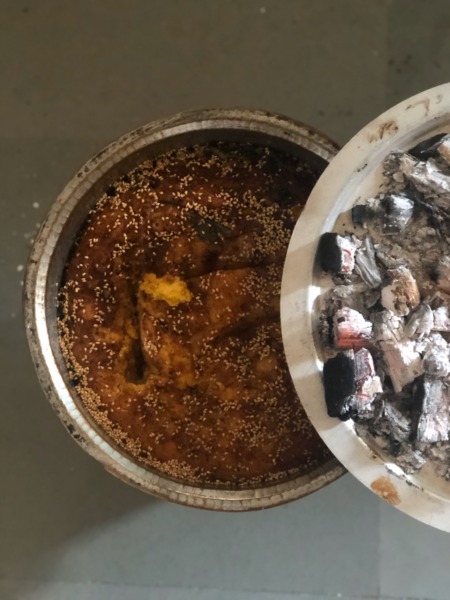
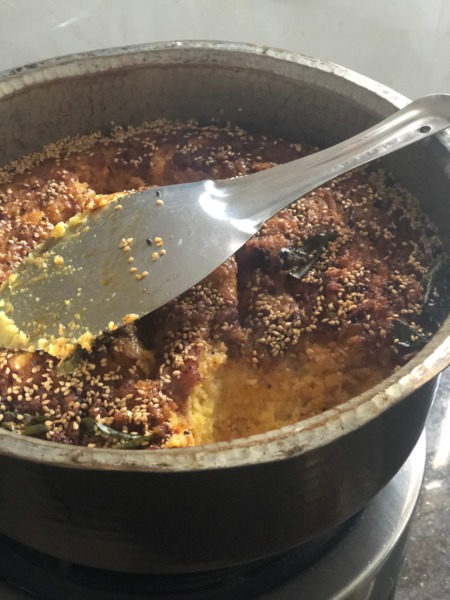
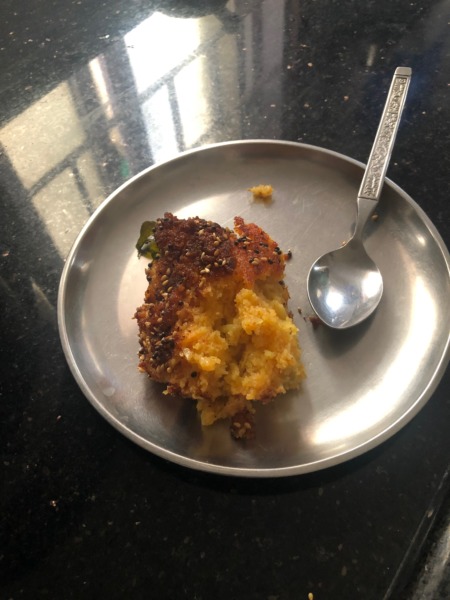
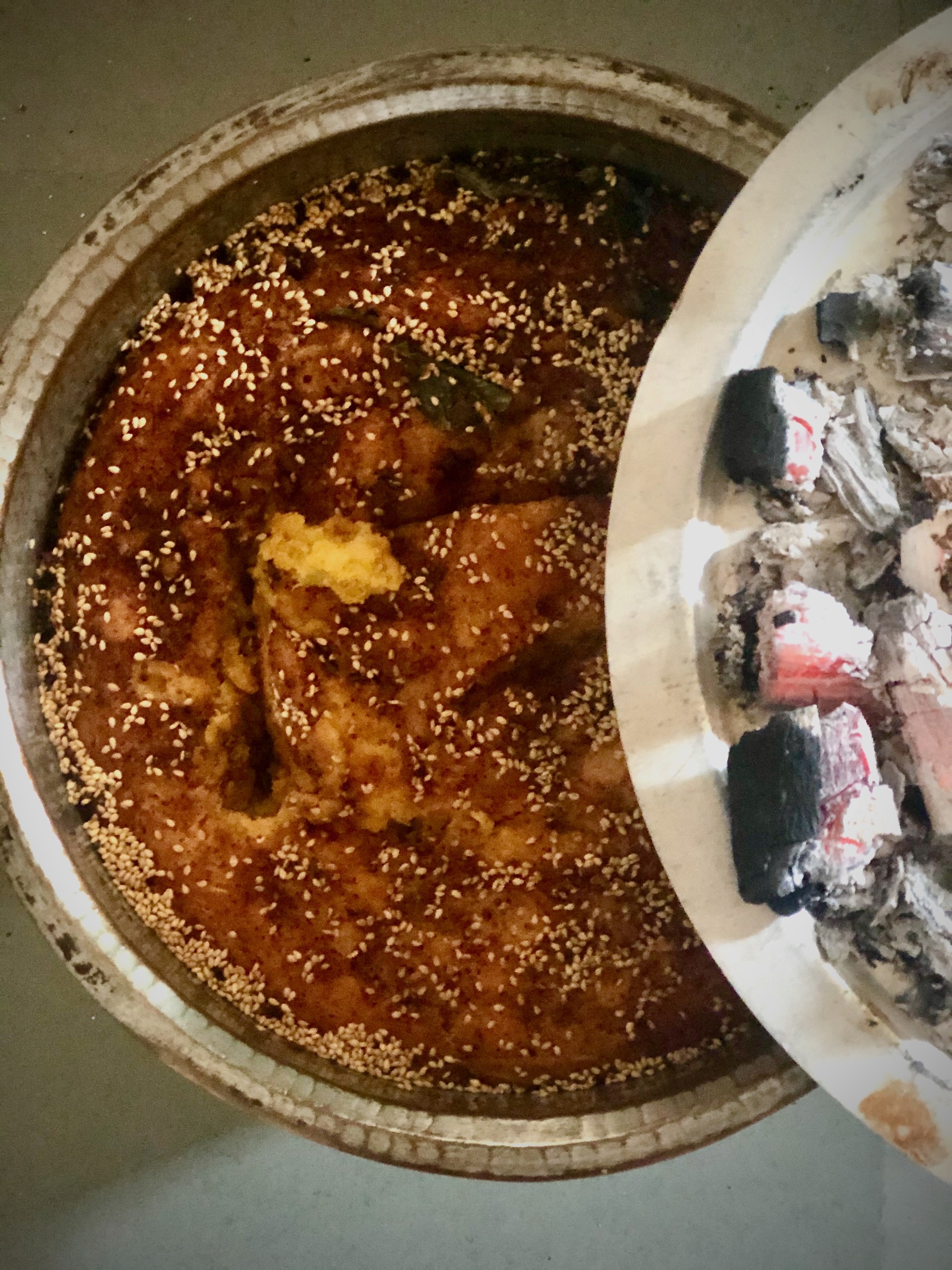
Classic Handvo
Ingredients
- 2+1/2 cup broken rice/ Kanki - used Krishna Kamod here
- 1+1/4 cup pigeon pea lentil/Toor dal
- 1 teaspoon methi dana/fenugreek seeds
- 1 cup grams sour yogurt/dahi
- 1/2 teaspoon baking soda/saaji na phool
- 1/3 cup oil used while fermenting the batter
- 2/3 cups oil used to temper (groundnut oil always)
- 2 cups grated bottle gourd/doodhi/lauki
- 3 - 4 teaspoons chilli and ginger, minced
- 6 teaspoons sugar (more or less to balance the sourness of the batter)
- 2 teaspoons turmeric ( used in the batter and to temper)
- 4 teaspoons red chilli powder ( used in the batter and to temper)
- 1/3 cup sesame seeds
- 2 teaspoons mustard seeds
- 4-5 whole red chilli
- 1 spring curry leaves
- 1/2 teaspoon hing/ asafoetida
- salt to taste
Instructions
Wash and soak the the rice, dal and fenugreek seeds for 5 hours.
Discard the soaking water and wash the soaked grains.
Using little water grind the mixture to an almost smooth consistency batter.
Transfer the batter to a stainless steel or ceramic mixing bowl.
Add 1/3 cup oil, sour yogurt and the soda bi carb.
Stir well. Cover and allow the batter to ferment overnight or for 7-8 hours.
Once you are ready to cook the handva, stir the batter well.
Add grated bottle gourd, minced ginger chilli, 1 heaped teaspoon red chilli powder, 1 teaspoon turmeric, sugar and salt.
Mix very well.
Bring together curry leaves, 1 teaspoon turmeric powder, 2 teaspoons red chilli powder, hing in a bowl.
Now heat a heavy bottom pan.
Add 2/3 rd cup oil and allow it to heat up.
Add the mustard and sesame seeds.
Once the crackle and sizzle add contents of the bowl and turn off the flame. Important because you do not wat the chilli powder to burn and turn black.
Immediately add the batter to the tempering.
Stir well.
Cover and cook on a slow flame.
It takes around 45-50 minutes for Handva to cook as shown here.
To check the doneness, insert a knife or spatula in to the Handva if it comes out clean the Handva is done. If it does not give it some more time.
Handva tastes better after it has rested and the crumb is allowed to set a little, it is always eaten hot however, it tastes fabulous the next day as the flavours mature.
Serve hot with pickle, tea and a drizzle of peanut oil.
Notes
We have tried to be as precise as we can be with the measurements. The chilli powder might overwhelm you but Handvo does use lot of red chilli. Feel free to adjust the spices to your taste. The use of sweetener which is sugar here should also be adjusted to the sourness of the batter after fermentation. You can use jaggery instead of sugar. The final batter will need to be flowy so add little water if required. Use sour yogurt. The usage of soda bicarb or saaji na phool gives lighter crumb.

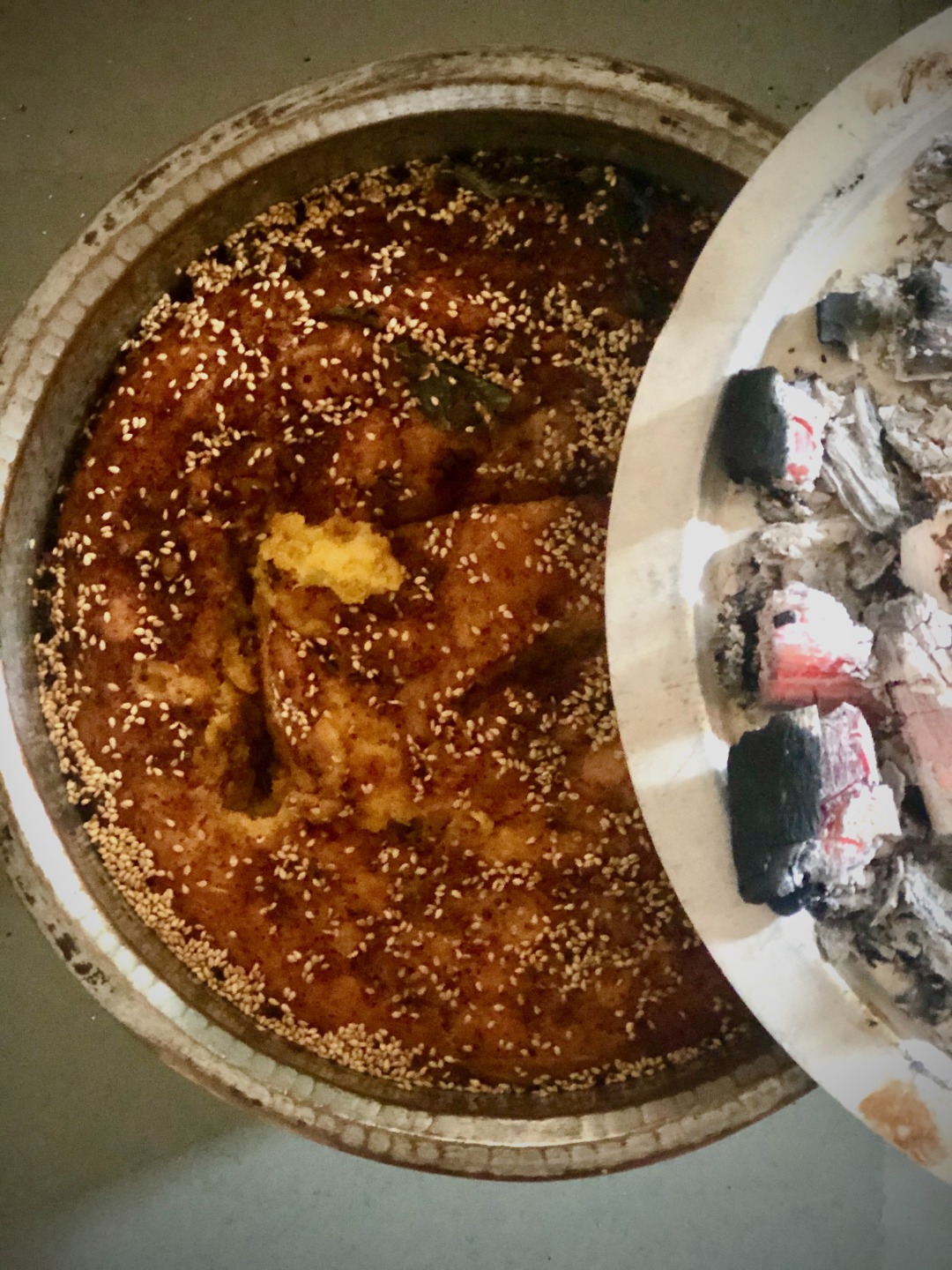

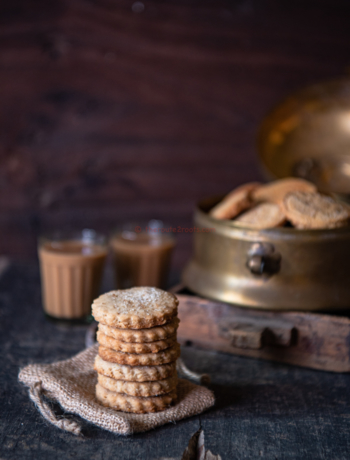
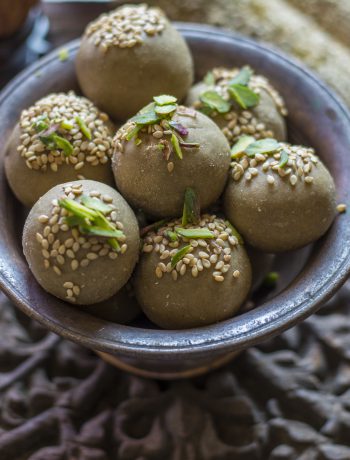
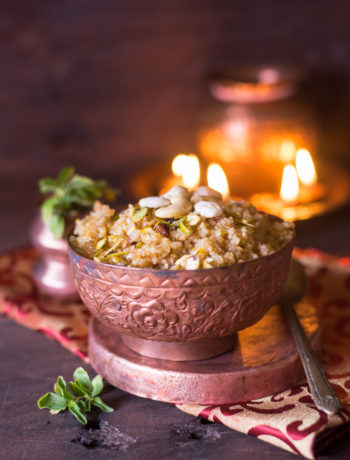
8 Comments
Shivanshi
April 23, 2020 at 7:17 pmHi! Can this be done in an oven? A normal OTG?
Sheetal
April 24, 2020 at 8:11 amYes of course you can. It is a huge quantity so you will have to plan and adjust accordingly.
Ranie
May 8, 2020 at 8:54 amHi… great recipe.. can’t wait to try it. In my small town of Gibraltar, we can only find basmati rice and sona masoori varieties of Indian rice. Although we do have a huge variety of international rice arborio, carnaroli, short grain, Bombay, sushi rice etc. Can I use any of these instead of the broken rice?
Sheetal
May 8, 2020 at 12:43 pmHello Ranie,
please use Sona Masuri, it is a small grained aromatic rice will fit the need perfectly. The idea of using small grained rice was devised to use the broken rice cleverly and not let them go waste. Feel free to use basmati too if you find only that. It is just that we don’t waste long grained rice to make flours or grind to batter.
Leena Karia
May 1, 2020 at 5:57 pmYou added the soda bi-carb as part of the fermentation process? Isn’t soda bi-carb’s effect more in the moment and to be used just before cooking?
Sheetal
May 1, 2020 at 6:39 pmWhen it comes to soaking batter for handvo, I have seen many elderly aunties add soda during soaking. They do not add it later and might avoid during summers when fermentation is good. For Dhokla it is added as needed when you prep batter for each thali.
ashwin bahulkar
December 30, 2020 at 10:48 pmThank you for the recipe! I have a question, why is the oil added before fermentation ?
Sheetal
December 31, 2020 at 2:31 pmthe oil helps tenderise the crumb. Just like we add a little oil to flour before kneading the dough.